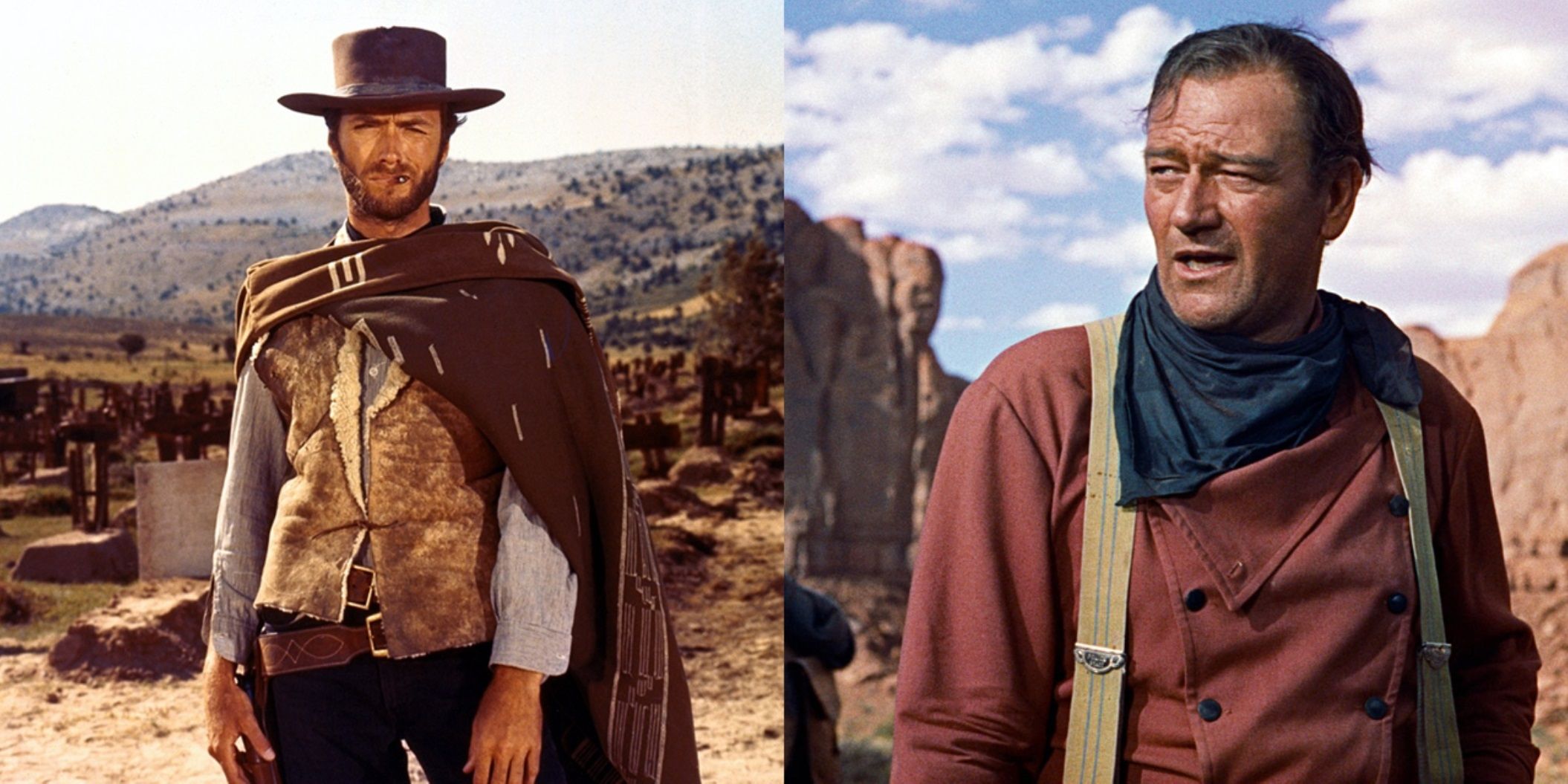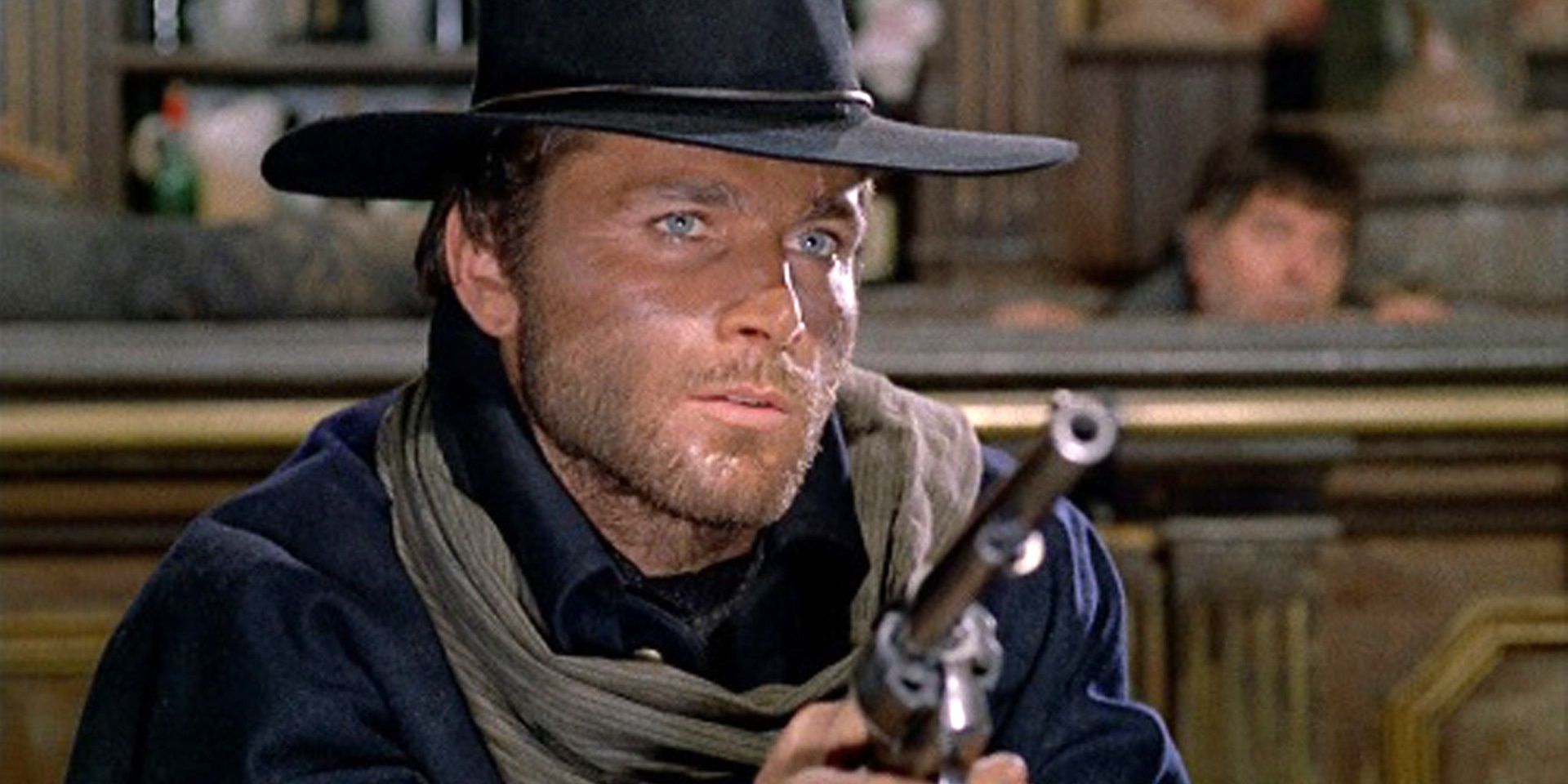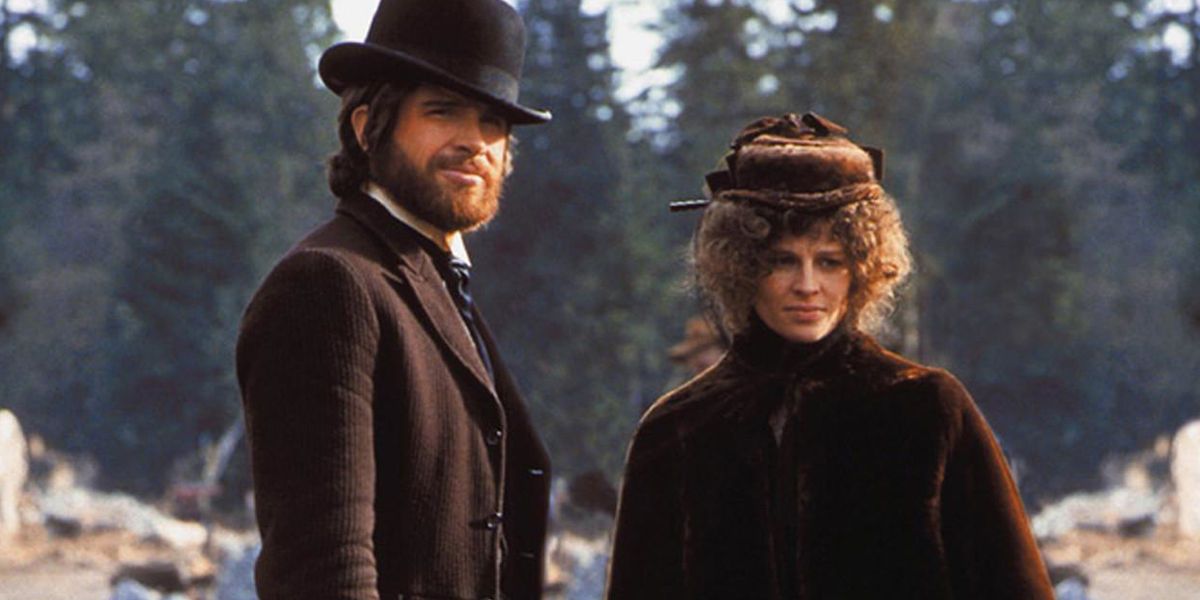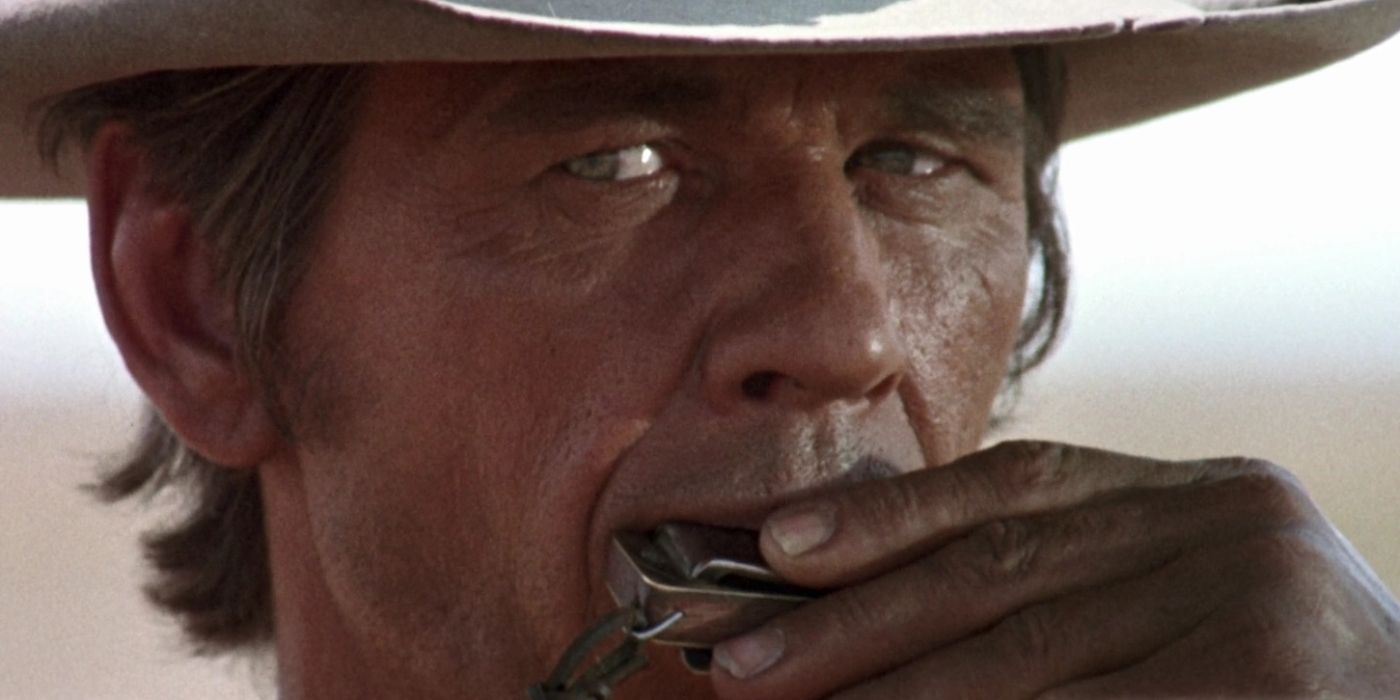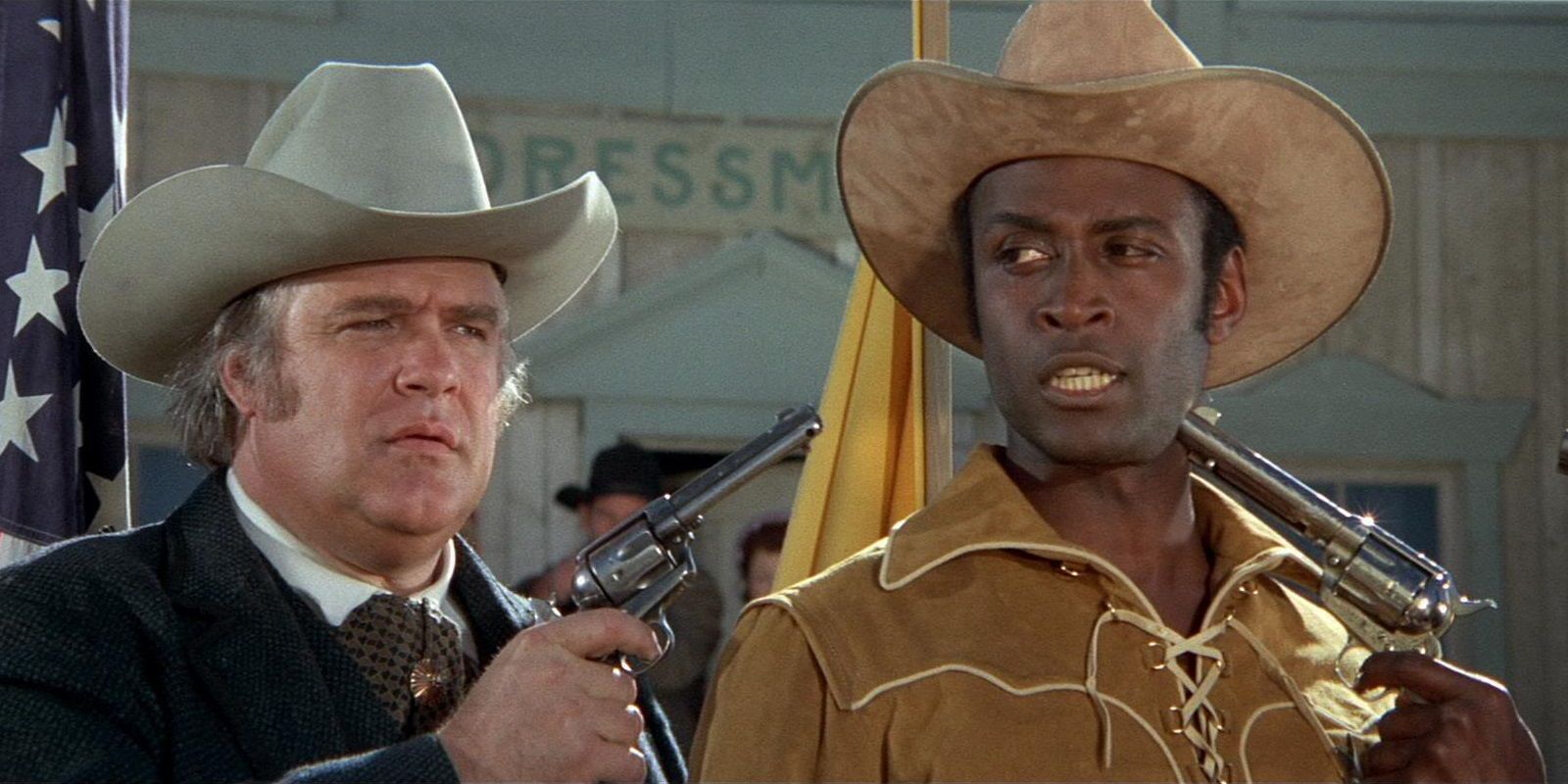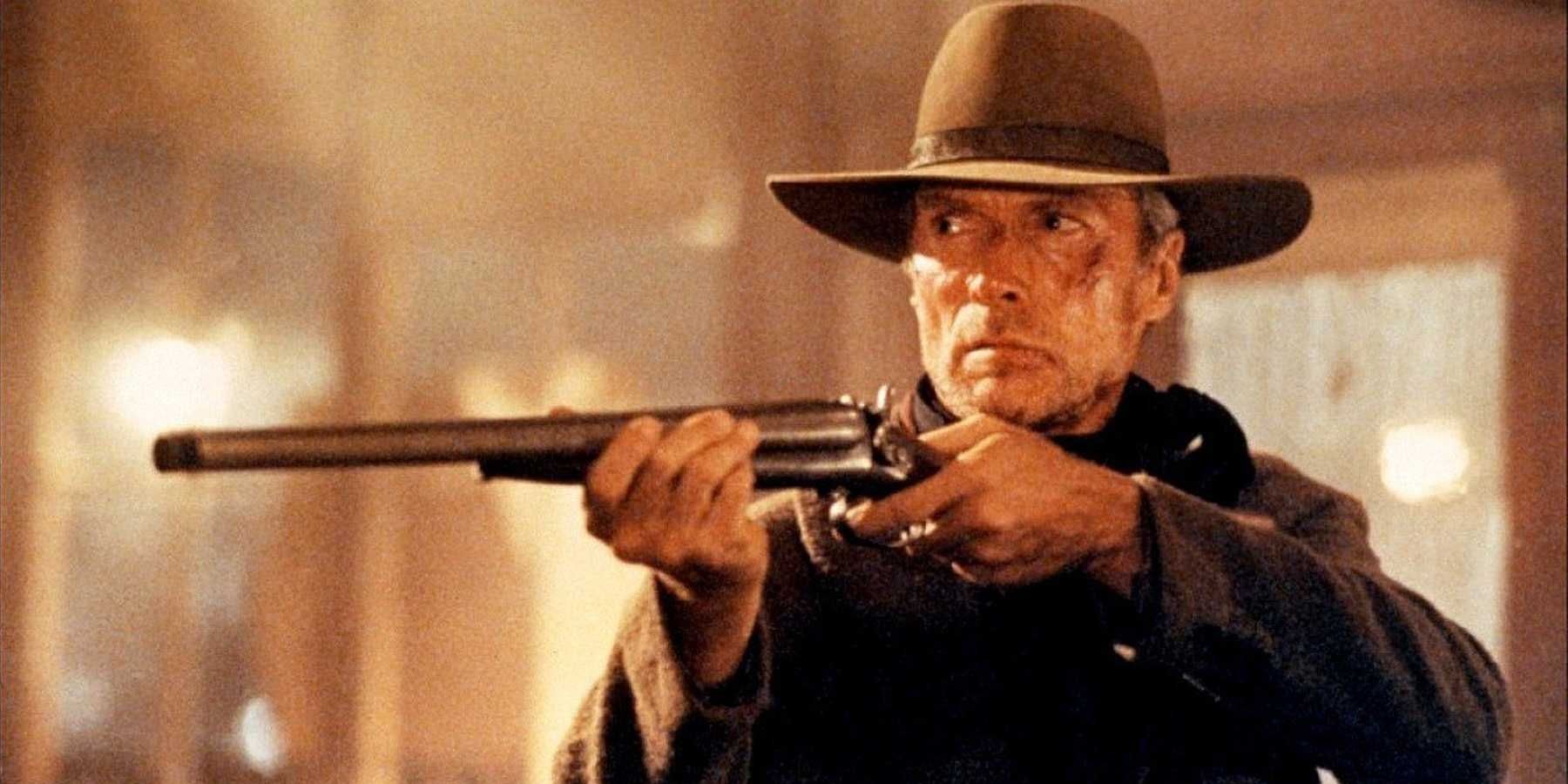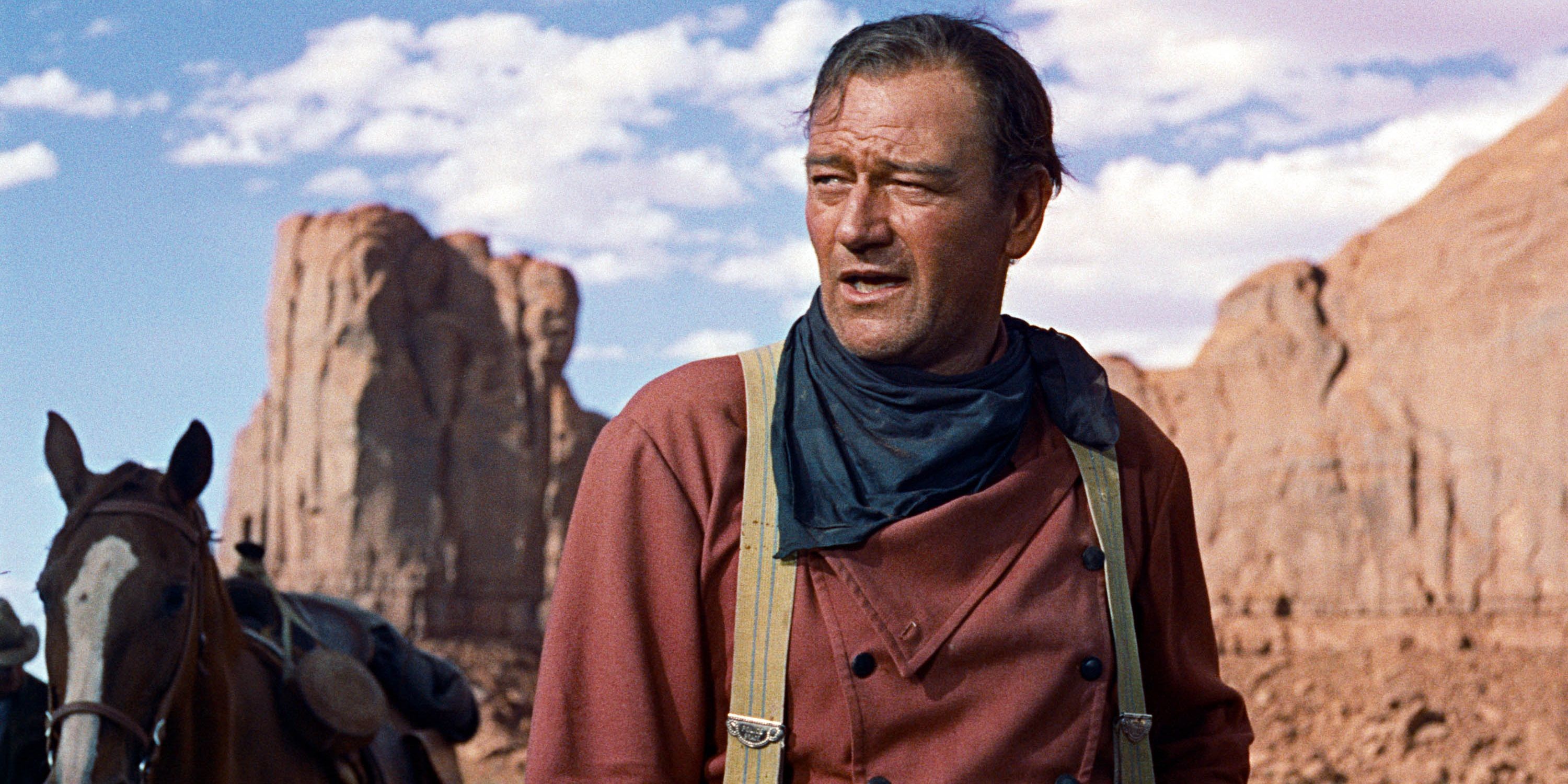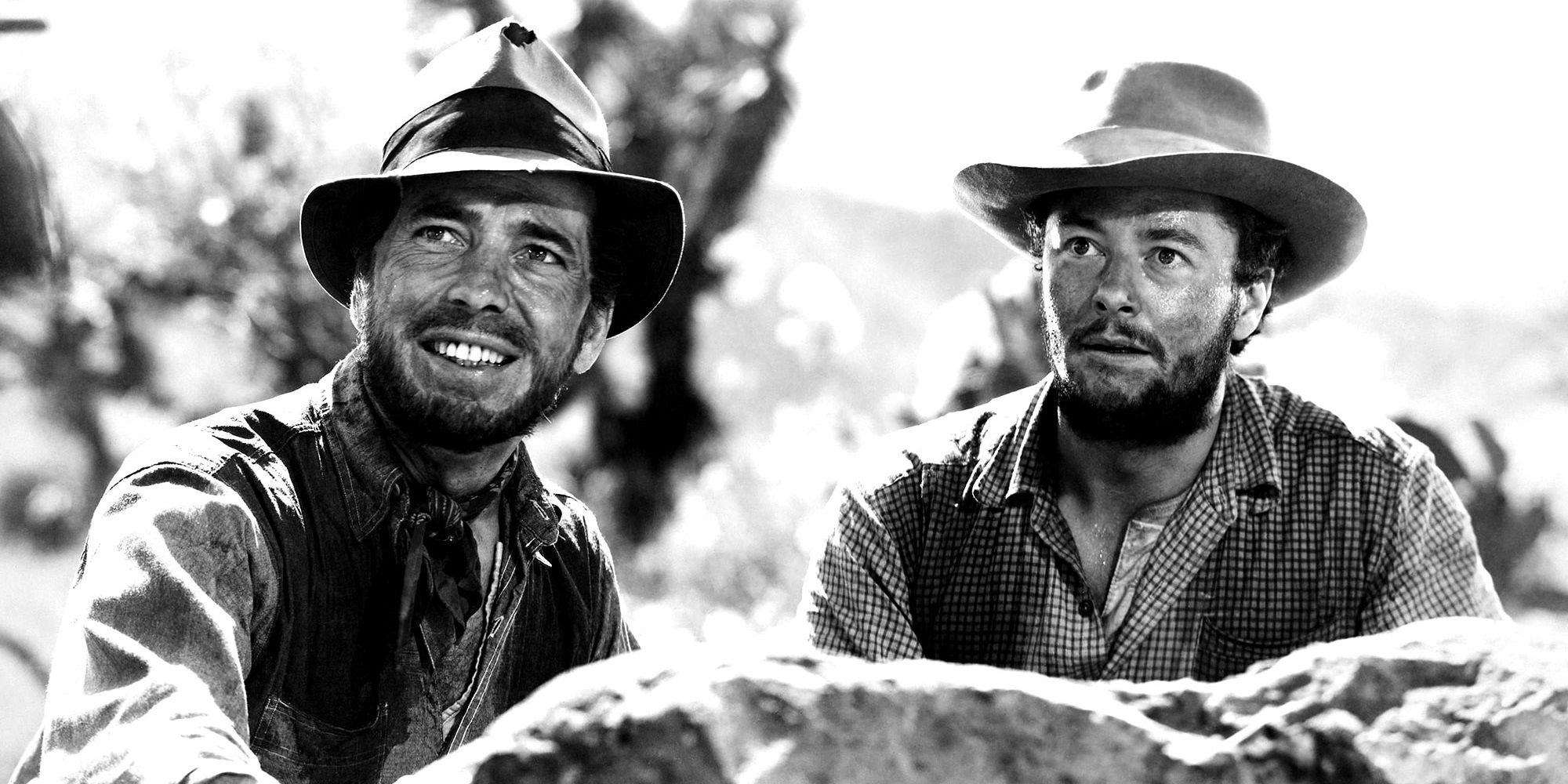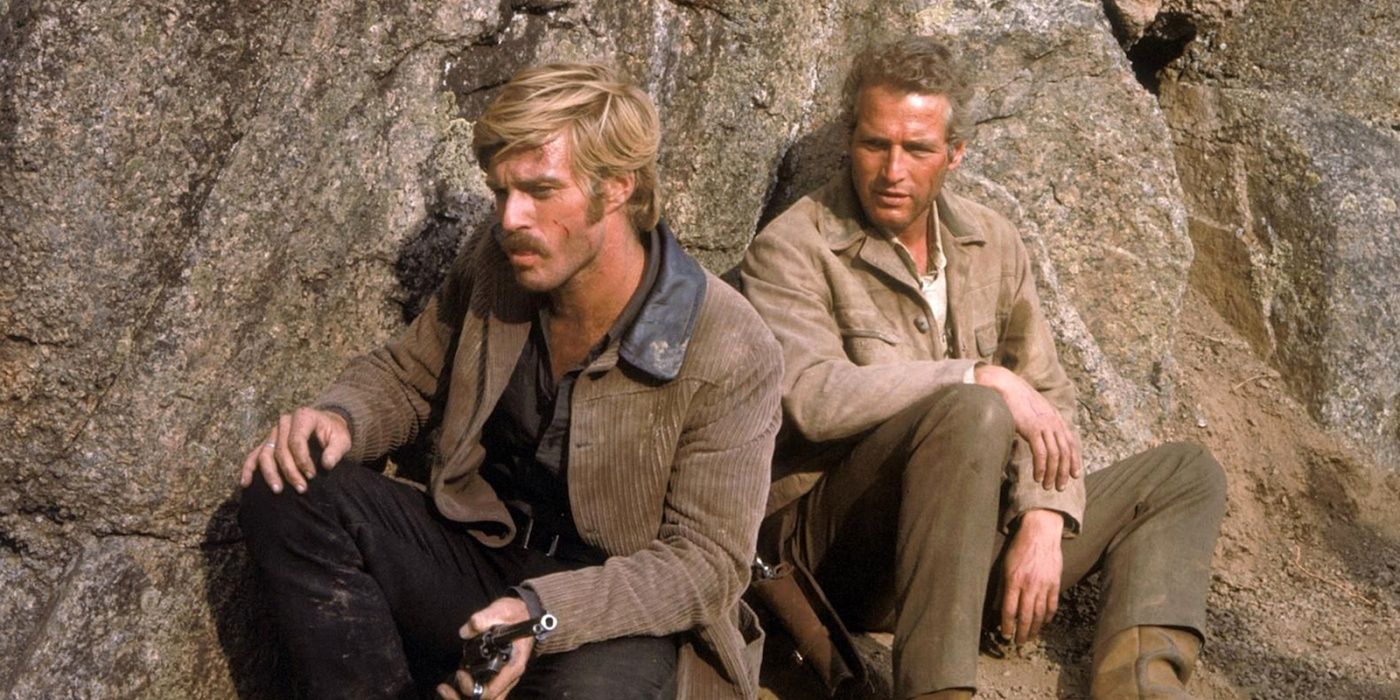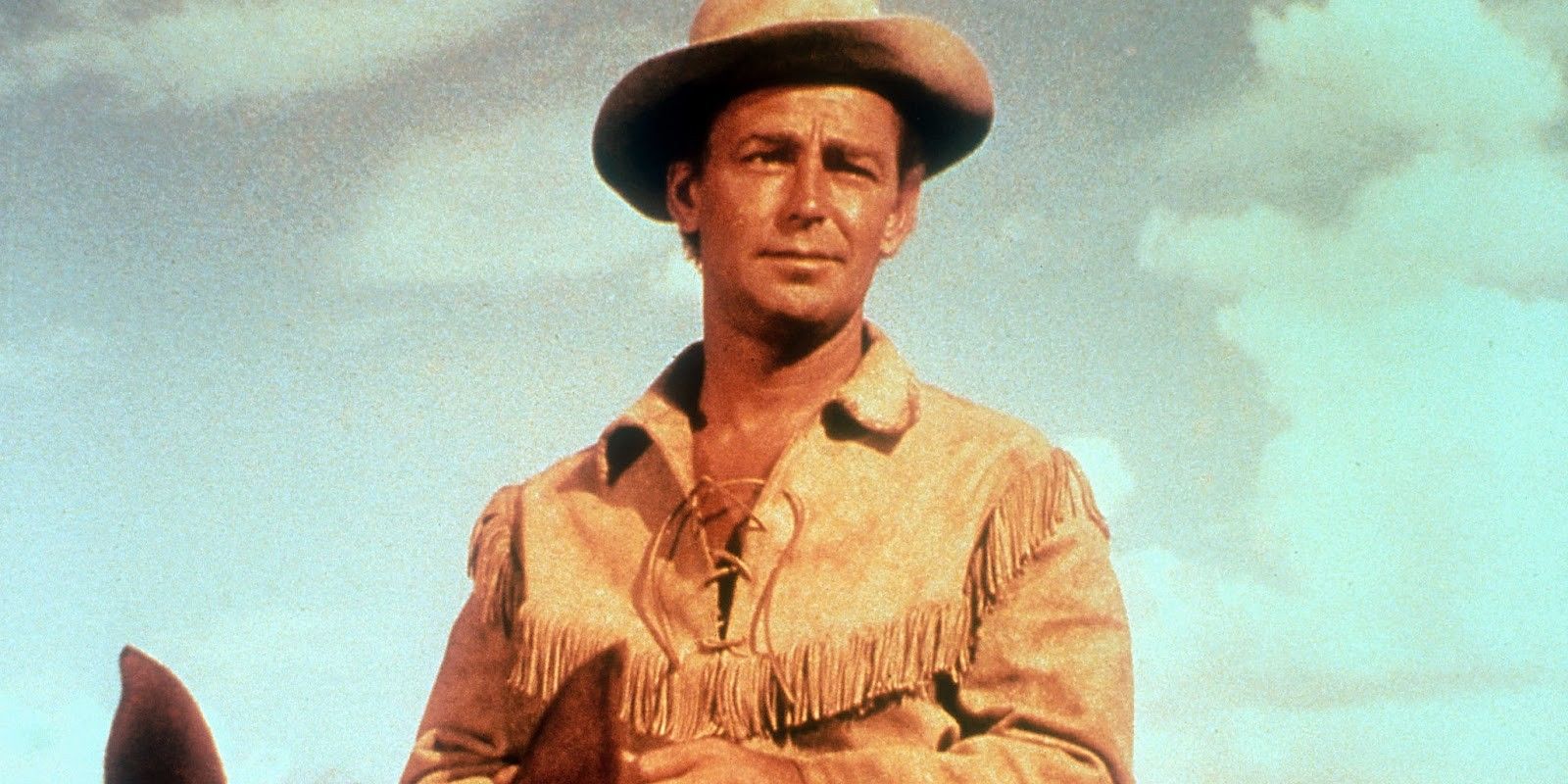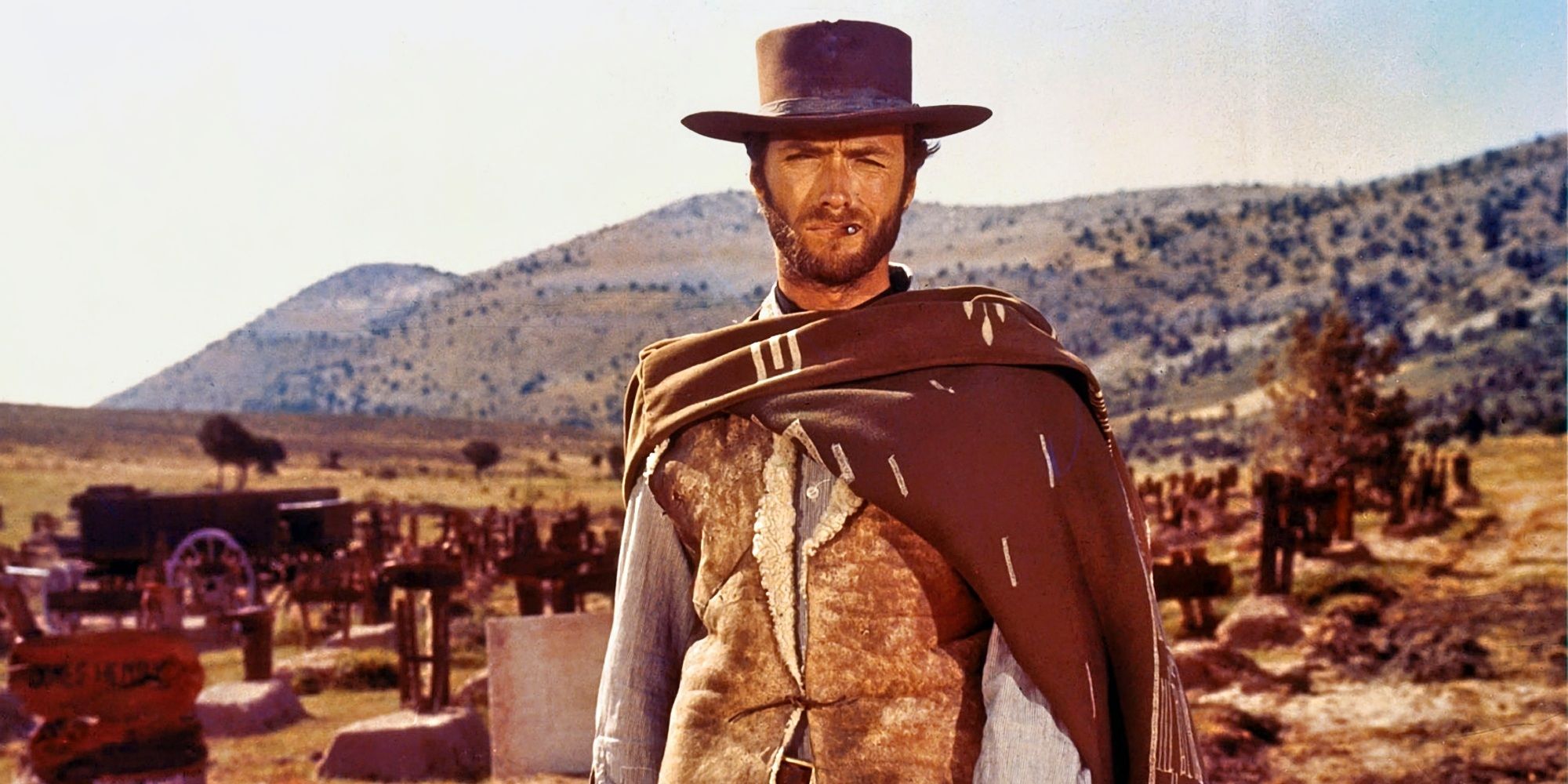The western is one of the oldest genres in the Hollywood tradition. The first few decades of westerns were defined by a clear-cut view of heroes and villains. When these tropes became well-worn, Italian filmmakers like Sergio Leone and Sergio Corbucci shook it up with their blood-drenched spaghetti westerns. After that, American directors like Robert Altman and Sam Peckinpah helmed gritty, revisionist anti-westerns that deconstructed the genre’s whitewashed conventions.
Along the way, the genre has been marked by compelling protagonists. Whether they’re classical heroes or revisionist antiheroes, western movies are often anchored by captivating lead characters.
Django (Django)
After Sergio Leone introduced the hallmarks of the spaghetti western with a westernized remake of Yojimbo in A Fistful of Dollars, Sergio Corbucci solidified those hallmarks with another westernized remake of Yojimbo, Django.
This version rounds out its antihero more. Franco Nero plays the titular gunslinger, who mysteriously drags around a coffin and turns out to be motivated by avenging the love of his life.
John McCabe (McCabe & Mrs. Miller)
Robert Altman’s McCabe & Mrs. Miller is one of the earliest anti-westerns, telling the story of a charismatic grifter and a cunning sex worker who team up to establish a brothel in a town that’s so early in its development, there’s only one solid building (everything else is in tents in the wet mud).
Warren Beatty’s John McCabe initially presents himself as a notorious killer, but he reveals himself to be a coward who’s never killed anyone before when a team of bounty hunters arrives and McCabe sneaks around town, trying to shoot them all in the back.
Harmonica (Once Upon A Time In The West)
Sergio Leone’s most iconic spaghetti western antihero is the “Man with No Name,” played by Clint Eastwood in the Dollars trilogy, but “Harmonica,” played by Charles Bronson in Once Upon a Time in the West, is a close second.
Harmonica is characterized through his chilling gimmick of playing harmonica before shooting his targets dead. The finale reveals that this harmonica was stuffed in his mouth by Henry Fonda’s sinister black-clad villain Frank while he tortured Harmonica’s older brother. Harmonica’s climactic retribution is suitably glorious.
Sheriff Bart (Blazing Saddles)
Mel Brooks’ Blazing Saddles is a biting satirical takedown of the western genre, but it’s also a satisfying tale of good triumphing over evil. Cleavon Little stars as Bart, a Black sheriff who’s appointed to protect Rock Ridge as an act of sabotage by the corrupt local governor.
Sheriff Bart proves to be so competent and dedicated to his new position that he not only unifies the town of Rock Ridge; he takes down the crooked politicians who appointed him in the first place.
William Munny (Unforgiven)
Clint Eastwood’s final western could’ve been the final western ever made, because it’s a perfect bittersweet swansong for the genre and its complicated mythos. Eastwood stars as William Munny, a sharp inversion of the gunslinger archetype.
Munny is sort of a John Wick of the Wild West. Unforgiven explores a grizzled, aging ex-gunfighter whose peaceful life as a pig farmer is interrupted when he’s called back into action to defend the honor of a sex worker.
Ethan Edwards (The Searchers)
John Ford directed a bunch of seminal western masterpieces, from Stagecoach to The Man Who Shot Liberty Valance, but arguably his most groundbreaking entry in the genre is The Searchers.
John Wayne gives one of his most nuanced turns as a Civil War veteran who embarks on a years-long quest to rescue his kidnapped niece, only to find that she doesn’t want to be saved.
Fred C. Dobbs (The Treasure Of The Sierra Madre)
John Huston’s The Treasure of the Sierra Madre is the definitive cinematic portrait of the corrupting power of wealth. It’s framed through the downfall of Humphrey Bogart’s antihero, Fred C. Dobbs.
Dobbs discovers a fortune in gold with his two partners and instantly becomes paranoid that they’re going to steal his share. Ironically, Dobbs’ paranoia makes him the one that the others need to keep an eye on.
Butch & Sundance (Butch Cassidy And The Sundance Kid)
William Goldman struggled to find a Hollywood studio that would produce his script for Butch Cassidy and the Sundance Kid, because its titular duo (inspired by real-life historical figures) are the opposite of every traditional western hero.
They don’t foil bank robbers – they are the bank robbers. And not only that; when they’re rumbled and the lawmen come after them, they flee across the border.
Shane (Shane)
George Stevens’ Shane is one of the quintessential western movies, because it deconstructs and humanizes a familiar genre archetype. Alan Ladd gives an iconic performance as the title character, an ex-gunslinger who gets a job on a ranch and connects with a family whose land is being threatened.
Throughout the movie, Shane learns that it’s impossible to outrun a violent past as he once again takes up arms to protect the ranchers. In the final scene, one of the most memorable movie endings of all time, he sums up these themes in a powerful monologue to his young companion, Joey.
The Man With No Name (Dollars Trilogy)
Sergio Leone’s Dollars trilogy – the masterfully crafted triple whammy of A Fistful of Dollars, For a Few Dollars More, and The Good, the Bad, and the Ugly – defined the uniquely revisionist, blood-soaked vision of the spaghetti western subgenre.
The movies aren’t linked by an ongoing storyline; they’re linked by the standalone adventures of Clint Eastwood’s ice-cool bounty hunter, the “Man with No Name.” Eastwood brought an authentic gruffness to the nameless gunslinger that perfectly encapsulates the gritty feel of the genre.

